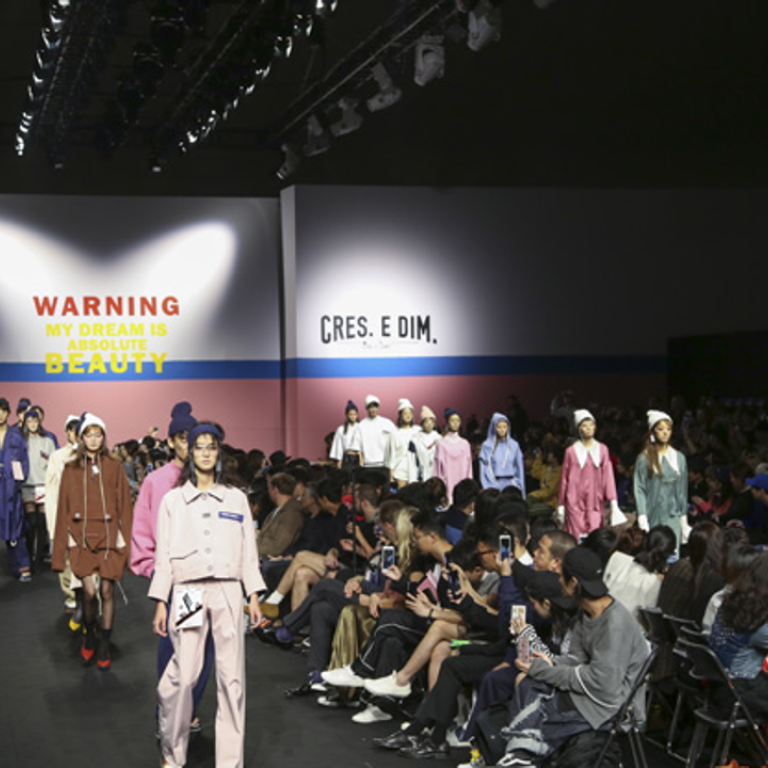
Seoul designers advised to focus on quality, not quantity
As Seoul Fashion Week executive director Jung Ku-ho’s tenure ends this season, he looks back on the good and bad and the future of Seoul’s fashion industry on an international platform
By Kim Jae-heun
Seoul Fashion Week executive director Jung Ku-ho has been emphasising for the past two years that promoting Korean fashion designers and the country’s biggest fashion event abroad is his top priority.
Now his tenure has come to an end and he has yet to decide whether he will renew for another term, but Jung continues to highlight that his successor has to also prioritise promoting Korean fashion abroad.
From the beginning of his term, Jung mobilised his personal connections to invite global fashion gurus, such as International Vogue Editor Suzy Menkes and fashion critic Diane Pernet. In his possibly final festival next week, Jung will bring ex-dean of fashion design school Parsons Simon Collins, Vogue Italy Senior Editor Sara Maino and i-D Fashion feature director Anders Madsen to Seoul.
“First of all, I think I was successful in introducing Seoul Fashion Week to the world,” said Jung during an interview with The Korea Times last Thursday at Seoul Design Foundation headquarters in Dongdaemun, eastern Seoul.
“People began to recognise the characteristics of Seoul Fashion Week and our fashion designers here. Now, we need to make business out of it and that’s what we lack,” Jung said. “It is important that our designers get more feedback from global experts rather than locals. We cannot send all Korean designers abroad, so at least we can try to give them an experience as if they were opening a show in Europe.”
As a fashion designer himself, Jung believes Korean fashion has come to a stage where designers have to focus on quality rather than quantity.
Korean fashion had been investing in high-end dressmakers until the economic recession hit the country in 1997, which led to market changes. Mid- and low-priced clothes started to sell well and street brands begin to thrive in Korea.
“In the eyes of foreigners, it is a shame that there aren’t so many Korean high-end designs but there are many young, casual and affordable street contents here, which appeals to European retailers, particularly in Britain,” said Jung.
Over half of the contracts signed at Seoul Fashion Week’s trade shows are with Chinese customers. For many Korean fashion designers, Chinese buyers are their main clients.
However, Jung rather advises them to put only one outfit in one celebrated European retail store.
“In the past, it was important how many orders you obtained. It was important how much you sell your clothes for, rather than who you sold it to. Now, we have to focus on the quality, not quantity,” he said.
“I am not talking bad about the Chinese market. You can sell hundreds of pieces to a local shop that nobody goes to. It is much better to hang at least one piece in a shop that is crowded with people and it promotes you,” said Jung.
He added that Korean fashion is far behind compared to those of Japan and China. The Japanese fashion industry is 30 years ahead of Korean fashion when it comes to the number of Japanese designers active in Europe.
“We need to have at least 10 Korean fashion designers selling their clothes in top European retail stores but we barely make over half. There are some 20 to 30 Japanese fashion brands which entered in the European market like COMME des GARCONS, Issey Miyake, Wonderground, White Mountain, you name it. There are countless Japanese brands that already entered the Western market in the 1980s,” he said.
“China has global fashion designers like Alexander Wang too. We are the last among the three.”
Still, Jung thinks Korean fashion has high hopes as the local industry is young and Korean fashion designers have begun to distinguish themselves on global stages.
“Seoul’s 10soul” is one of the projects that Jung adopted in the beginning of his tenure that picks the top 10 designers from Seoul Fashion Week to open pop-up stores in collaboration with popular European retailers.
Fashion brand “Blindness” by Shin Kyu-yong has recently entered Italian high-end fashion retailer Excelsior with its 2017 Spring and Summer collection. Shin was nominated for the rookie award of the 2017 LVMH Prize.
Fashion designer Han Hyun-min of “Munn” also became Asia’s top contender for the Woo Mark Prize with his last collection and entered high-profile French showroom Showroom Romeo along with Tiiki of designer Kim Young-kyun.
“What foreign press and global buyers take seriously when they come to Korea is whether the Seoul Fashion Week has many good runways to watch. It does not happen in one day and it takes time. Last season was particularly great and if it continues, we will have our own devoted buyers keep coming to our shows,” Jung said.




